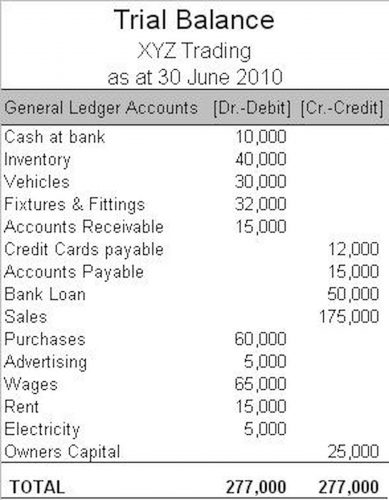
Accurate valuation is crucial for financial reporting, pricing strategies, and tax calculations. It helps wineries understand their current assets, manage stock levels efficiently, and make informed business decisions regarding production and sales. Finally, in the area of overhead, wineries will need to exercise judgment and use appropriate estimates.

Which accounting method should I use for my winery?

When calculating labor costs, it can be difficult to pin down the pay of executives and owners to any one specific department, let alone Coffee Shop Accounting a single vintage. To account for these employees, portion out a slice of the revenue from each department that person regularly attends to. Protea Financial knows and understands the specific challenges of running a successful winery. Wine businesses that are doing direct-to-consumer (D2C) sales have to deal with further problems. They must keep track of numerous sales channels, e-commerce platforms, and tasting rooms.
Key Accounting Practices for Wineries

You should also make sure to recording transactions review your retirement contributions and make sure you are on track. If you’re not already working with your tax pro in this way, make sure you reach out to them now and get a meeting on the calendar for next year. Chime in on The Punchdown where other like-minded winery professionals go to connect and communicate with one another. If you want to spend your time doing what you do best, let the experts at Protea give you the luxury of not having to think about your books. The wine industries have to deal with heavy taxation and excise duties. These depend on the type of wine that is being manufactured, the content of alcohol in them, and their delivery destination.
- If you operate a vineyard in addition to winery, include those labor expenses in your total labor cost.
- Cost accounting is challenging for a winery and requires a full-time commitment to the job.
- We are here to help make the finance part work, so that you can build a successful winery that will sustain itself, and you, for generations to come.
- This method records revenues and expenses when they are incurred, rather than when cash is exchanged.
- Cash-based accounting might seem appealing for its simplicity — you track money when it comes in and when it goes out.
- In this article we provide an overview of how to calculate the cost of goods sold (COGS) and why it matters.
- Advanced technological solutions can streamline accounting processes, improve accuracy, and provide real-time insights into financial performance.
Wine Costing & Inventory Support
- Protea Financial knows and understands the specific challenges of running a successful winery.
- This automation reduces the time spent on manual accounting tasks, allowing winery staff to focus on core business activities.
- In this article, we will delve into the best practices in wine industry accounting, exploring key accounting methods, the role of technology, and the importance of compliance and tax considerations.
- Many wine producers own wine clubs where they sell to direct consumers.
Tax accounting for wineries involves managing excise taxes, sales taxes, and import/export taxes. Proper tax accounting ensures compliance with local and federal regulations, helps avoid penalties, and can optimize tax liabilities. Understanding tax obligations and benefits can significantly impact a winery’s financial health and operational efficiency. By tracking your income and expenses and knowing your profit (or loss), you’ll have a better handle on the financial health of your business. Since the wine industry can be fickle, it is essential to make sure you track everything carefully.
A common method of allocating shared facility costs to functional departments is to capture such expenses in a cost center and allocate them based on the amount of space occupied by each department. Join 500+ wine business owners in the know, getting the latest accounting news in the wine business. Regularly review and adjust expense recognition practices as your winery grows and changes. winery accounting What worked in the past may not be suitable as operations scale up or diversify. Estimating and accounting for potential returns and allowances that can affect revenue is crucial. Establishing a reliable method for estimating these figures based on historical data is important for accurate revenue recognition.
Best bookkeeping software for wineries
Whether you’re a vineyard owner, a winery operator, or a financial manager, mastering these accounting principles can significantly impact how you perceive your business’s financial health. When managing a winery, one of the most crucial decisions you’ll make is how to handle your accounting. It’s not just about keeping the IRS at bay; it’s about gaining insights into your business to make strategic decisions that enhance your profitability and growth. Let’s dive into the core differences between accrual and cash accounting methods, and how choosing the right accounting method framework can significantly impact your winery’s management. Upon completion of this course students will understand the basic differences between various cost accounting methods and be able to calculate cost of goods sold. When calculating the cost of making and selling wine, it’s typically recommended to use accounting principles generally accepted in the United States of America (U.S. GAAP).

Key differences between tax basis accounting and accrual basis accounting for wineries
- Accurate valuation is crucial for financial reporting, pricing strategies, and tax calculations.
- Whether you’re a vineyard owner, a winery operator, or a financial manager, mastering these accounting principles can significantly impact how you perceive your business’s financial health.
- The costs of grapes, bulk wine, glass, and other dry goods must be assigned to separate wines and tracked by SKU.
- Here’s one of their episodes featuring our CEO, Ashley Leonard, talking about inventory management and cost accounting for wineries.
- We will work with you to create accurate financial statements and provide guidance on making sound business decisions.
- There can be other items that impact COGS specific to the accounting method used as well as other specific business cases that can be discussed further with your CPA.
By effectively managing these aspects through your P&L statement, you can make strategic decisions that propel your business forward. Remember, the goal is to ensure that each entry on your P&L statement truly reflects your business activities, enabling you to make well-informed decisions. Professional wine accounting services, like those offered by Protea Financial, provide expert guidance in managing complex financial aspects of the wine business. They offer services such as financial statement preparation, tax planning, inventory management, and cost analysis.
Wineries may choose to utilize other industry contacts or a CPA with wine industry experience to discuss the best approach for the situation. An outside entity can offer an unbiased perspective on missed costs and alternative ways to allocate the identified costs. The process of applying overhead costs should evolve over time as operations become more complex, and so too should the allocation methodology—without negatively impacting consistency. It’s also important that financial reporting disclosures provide transparency about inventory costing, methods, assumptions, and significant estimates. Integrating accounting software with Point of Sale (POS) systems and Customer Relationship Management (CRM) systems is essential for providing a holistic view of a winery’s financial operations.

Leave a Reply